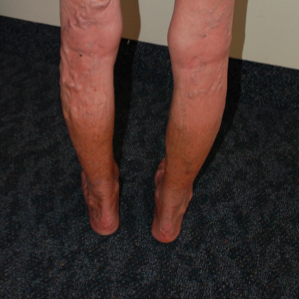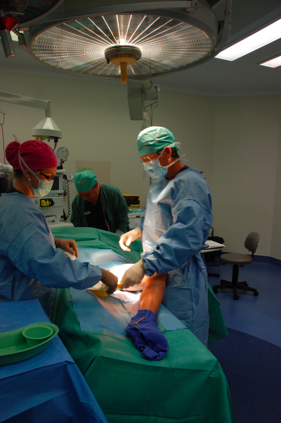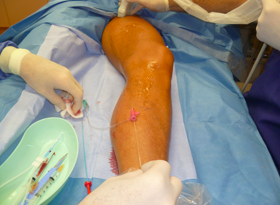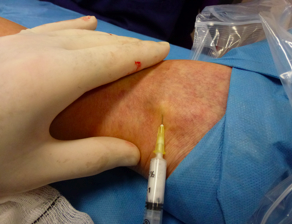Varicose veins are swollen, dilated veins that are visible beneath the skin surface. They may appear bulging, twisted and unsightly.
Sometimes varicose veins are associated with pain, discomfort, or swelling of the leg and ankle.
Occasionally complications develop, such as phlebitis, skin changes around the ankle and ulcers.
Spider veins are dilated small veins (or venules). They cause purple discolouration of the legs that is often a significant cosmetic problem.
They may be uncomfortable, and occasionally they rupture and cause bleeding.
Treatment
At Vascular Surgery WA a full range of treatment options are available. These include
- Surgical stripping
- Endovenous Laser
- Phlebectomy
- Sclerotherapy
- Embolization
- Stockings
A treatment plan is made for each patient, which takes into account the preferences of the patient, and the options that are appropriate.
Sometimes a combination of the techniques will be recommended, to get the best result.
Surgical stripping is usually done in the Operating Theatre under a general anaesthetic. The bulging varicose veins are removed and the cause is corrected. Patients are admitted to hospital for 1-2 days, and are off work for up to 2 weeks.
Theatre and hospitalization costs are covered by Private Medical Insurance.
Endovenous Laser is a minimally invasive Outpatient Procedure under local anaesthesia for the treatment of varicose veins and their cause. Patients are at the Treatment Centre for 2-3 hours and off work for about 3 days.
In many cases patients need to choose between Surgical stripping and Endovenous Laser, which can be viewed as treatment alternatives.
However, there are also particular circumstances where one or other is preferable. Patients will be advised when this is the case.
Phlebectomy refers to the removal of bulging varicose veins through small 3mm incisions, (without correction of the cause). It can be done under local anaesthesia, if the veins are relatively few, but is done under general anaesthesia if there are multiple or large veins to be removed.
Ambulatory Phlebectomy refers to phlebectomy done in an office setting under local anaesthesia, (after which the patient walks out of the office to go home).
Sclerotherapy is an office based treatment for spider veins (telangietasias) and varicose veins. It is used as stand alone treatment for small caliber veins, but is also used in combination with other forms of treatment, especially when the patient has a mix of large and small veins.
Sclerotherapy refers to the injection of a sclerosant fluid into the treated vein. The sclerosant irritates the vein wall and causes it to block. Over time the vein resorbs and disappears.
Polidocanol is the sclerosant that is used in most cases in our practice.
Patients return to work the day after treatment.
Microsclerotherapy involves the use of very fine needles for injection of unsightly spider veins. It is a very common treatment best performed by an experienced physician who does the procedure regularly.
Ultrasound Guided Sclerotherapy is done for larger veins that are not easily visible. These veins are generally connected to and may cause visible varicosities. Ultrasound is used to locate the veins and guide the passage of the Sclerotherapy needle.
Embolization is used to the treat the small group of varicose veins arising from abnormal pelvic veins. A fine catheter is typically introduced into a vein at the top of the thigh, and threaded into the pelvic vein. Embolization coils are passed through the catheter to block the vein, removing it from the circulation.
The procedure is usually done under local anaesthetic as a day case. It is a minimally invasive with no scars.
However, it requires sophisticated X-ray imaging and is done in hospital.



 Menu
Menu









